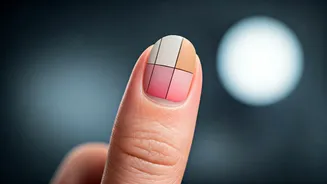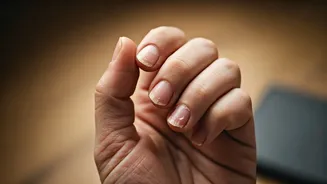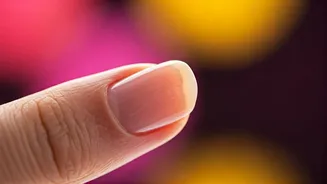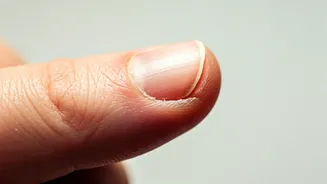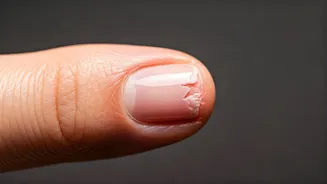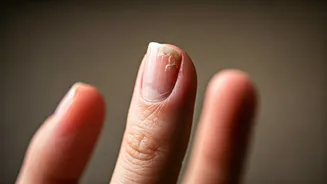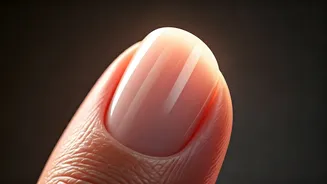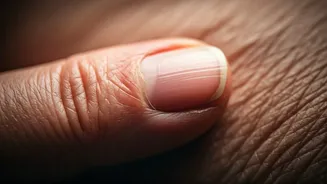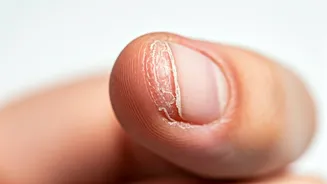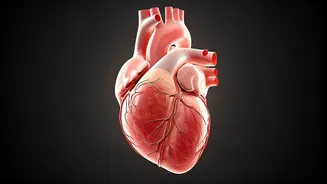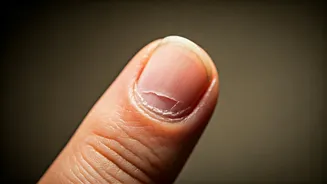Nail Health Indicators
Nails, often seen as mere appendages, can actually reveal a lot about your internal health. Subtle changes in nail appearance, texture, and color can serve
as early warning signs of various health issues. It is essential to recognize that nail conditions can be linked to a range of medical problems, from nutritional deficiencies to more serious diseases. Pay close attention to your nails for potential health concerns. Consulting a healthcare professional is crucial if you notice any changes or abnormalities in your nails. This is not for self-diagnosis, but to be aware of the importance of recognizing the signals that your nails might be sending to you. Monitoring changes in your nails can be a proactive step towards maintaining overall well-being. Regular self-examination and vigilance can help you identify potential problems early on and seek appropriate medical care when needed, thereby improving your overall health and well-being.
Sign: Discoloration Concerns
Nail discoloration can be a key indicator of various health issues. Yellow nails, for example, can be associated with fungal infections, which, if left untreated, can spread and cause further complications. Brown or black discoloration could point to issues like bleeding under the nail or, in rare cases, melanoma, a type of skin cancer. Greenish nails often indicate a bacterial infection. Red streaks, particularly at the base of the nail, might be a symptom of a systemic illness or injury. Any unexplained changes in nail color should prompt a visit to a doctor. A healthcare provider can diagnose the underlying cause and recommend appropriate treatment to prevent worsening of the condition. Pay attention to how your nail color changes with time and seek professional help. Early detection and treatment can prevent further complications, highlighting the importance of nail health in the context of overall well-being.
Sign: Nail Texture Changes
The texture of your nails can change due to various health conditions. Ridged nails, with vertical lines, are commonly associated with aging and are generally harmless. However, deep or pronounced ridges might suggest iron deficiency or other underlying health issues. Horizontal ridges, also known as Beau's lines, often appear after a major illness, injury, or severe stress, indicating a temporary disruption in nail growth. Brittle nails that crack or split easily can be caused by nutrient deficiencies, thyroid problems, or exposure to harsh chemicals. A dry and flaky texture may indicate a fungal infection or skin condition like psoriasis. It's crucial to consult a dermatologist or healthcare provider if you notice changes in your nail texture. They can investigate the cause and provide appropriate treatment.
Sign: Shape Anomalies
Nail shape can also reveal underlying health concerns. Spoon-shaped nails, where the nail curves inward, can be a sign of iron deficiency anemia or certain heart conditions. Clubbing of the nails, characterized by an enlargement of the fingertips and a downward curving of the nails, is often associated with lung diseases, heart problems, or certain cancers. Pitted nails, marked by small depressions or pits on the surface, are commonly linked to psoriasis or alopecia areata, an autoimmune disorder causing hair loss. Any significant changes in nail shape, or if you observe any unusual curving or alterations in the nail plate, warrants medical evaluation. Identifying these shape anomalies through professional consultation can help determine the health issues behind them and help with early treatment.
Sign: Nail Thickness Variations
The thickness of your nails can also offer valuable clues about your health. Thickened nails, which become abnormally thick and difficult to trim, can be caused by fungal infections or psoriasis. This condition may lead to discomfort and difficulties in daily activities, making proper diagnosis and treatment essential. Thin or fragile nails can result from nutritional deficiencies, thyroid disorders, or exposure to harsh chemicals. These conditions can make your nails prone to breaking or splitting, affecting both their appearance and function. Regular examination of your nail thickness, along with consulting a doctor, is crucial. If any changes occur, prompt evaluation can help determine underlying causes, enabling timely interventions. Seeking advice from a healthcare professional allows for informed decisions and effective management.
Sign: Skin Issues Nearby
The skin around your nails is an area that can provide further insights into your health. Inflammation or redness around the nail bed (paronychia) can signify a bacterial or fungal infection. This area might become painful, and in some cases, lead to pus formation, requiring prompt medical intervention. Skin conditions like eczema or psoriasis can affect the skin around the nails, causing scaling, itching, and changes in the nail's appearance. Other skin-related issues, such as warts or tumors, could also develop around the nails, impacting both aesthetics and health. Therefore, regularly inspect the skin surrounding your nails for any abnormal changes. It's advisable to see a dermatologist or healthcare provider promptly if you notice any unusual skin conditions. Early assessment and treatment of skin issues can prevent further damage.
